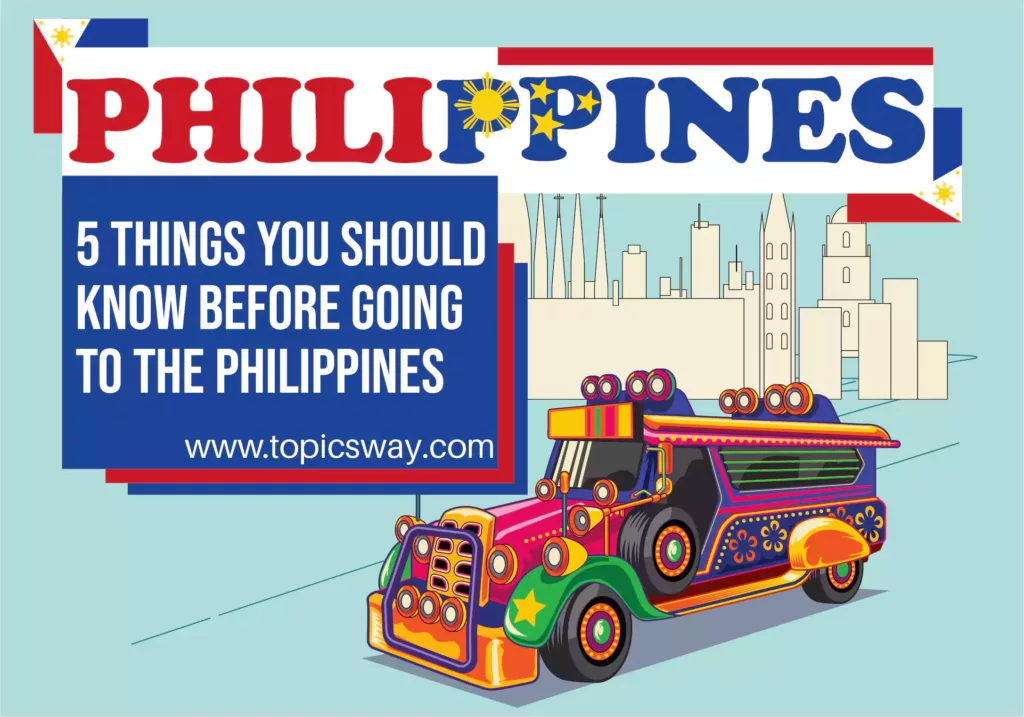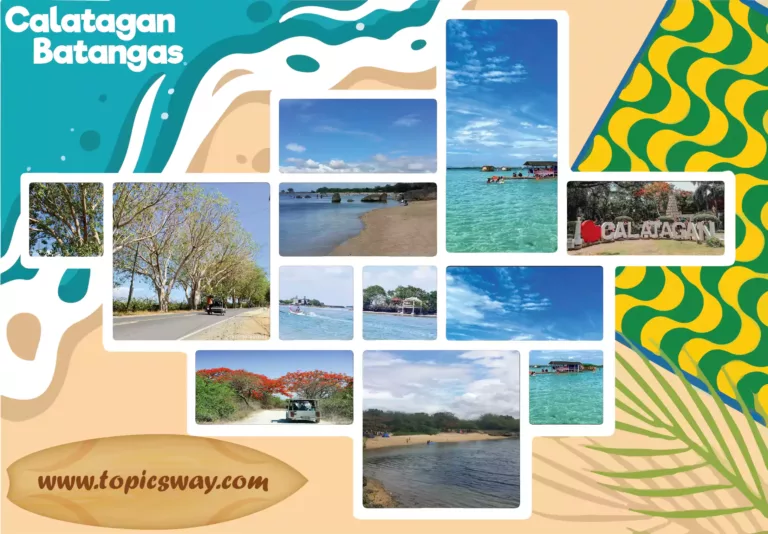Create your Blog
Share with your friends!
- Author: topics way
- March 16, 2021
- 2:25 pm
5 Things You Should Know Before Going To The Philippines
“5 Things You Should Know Before Going To The Philippines”
The Philippines, which is referred to as the “Pearl of the Orient Sea ”, is a country located in Southeast Asia. It is the world’s 5th largest archipelago and consists of over 7,641 islands. The number of islands that can be seen varies from time to time due to the effect of tides. This simply means that whenever the high tide occurs, some of the islands are covered with water and will resurface once the low tide happens.
Since the Philippines is surrounded by bodies of water, it is evident that this country is blessed with pristine beaches that are unquestionably world class by dint of its crystalline water, delicate white sand, and a very vibrant underwater ecosystem. Some of these prominent beaches are Boracay Island and El Nido Palawan.
Other than that, the Philippines is known for its astounding landscapes that are really breathtaking like the Banaue Rice Terraces and Chocolate Hills. In addition to this, the Philippines is not only blessed with magnificent tourist spots because they are also gifted with a highly diverse culture. Nevertheless, the Philippines is way more than those beautiful tourist spots because the true beauty of the Philippines lies in its people.
Definitely, the Philippines is a country that you must visit. If you are planning to visit the Philippines soon, then this blog is perfect for you. Here’s the 5 things you should know before going to the Philippines:
1. Weather:
The Philippines is one of the tropical countries found in Southeast Asia. This simply means that unlike other countries that have 4 seasons, the Philippines only has two seasons – the dry and rainy season. According to PAG-ASA , the rainy season is experienced in the months of June to November. Typhoons frequently occur during this season which brings heavy rainfalls, thunderstorms, and strong winds.
On the other hand, the dry season takes place in the months of December to May. Even though January is part of the dry season, the coldest time of the year will be experienced during this month. Moreover, the warm temperature is at its peak during the months of March to May. So if you want to visit the world class beaches in the Philippines and flaunt your beach body while drinking your buko juice, the months of March to May are the perfect time to do it. Just make sure you’ll bring an extra bottle of sunscreen if you are planning to have some sunbathing.
2. Religion:
The Filipinos are one of the most religiously devoted people that you may meet in your entire life. Religion is a big thing in the Philippines and you can find some churches of different sects and religions wherever you are. The major religion in the Philippines is Roman Catholic and it composes 80.6% of the entire population. Through this, the Philippines is hailed as the third most Catholic countries in the world, next to Mexico and Brazil, making it the most Catholic country in Asia. The secret behind the widespread Catholicism in the Philippines is embedded in its history. It is because the Philippines was colonized by Spain for approximately 333 years and one of its evident influences on the Philippines is religion.
Ferdinand Magellan is the one who discovered the Philippines because of his quest to find some spice for Spain back in 1521. From then, they introduced the concept of Catholicism to the native Filipinos and built numerous Baroque designed Catholic churches all over the country. Until now, you can still see some of these centuries – old Catholic churches in the country. Therefore, church hopping is a must try activity if you want to see the culture, heritage, and marvelous architecture in the Philippines.
3. Language:
Are you having some second thoughts in coming to the Philippines because of the language barrier? Calm yourself down because as long as you know how to speak English, you will not be harmed since the Philippines is an English-speaker friendly country.
For some reasons, approximately 63.7% Filipinos are eloquent English speakers causing them to garner the second spot in Top 8 English Speaking Countries in Asia based on EPI results. Moreover, English has been one of the official languages used in the Philippines alongside Filipino. In fact, the Filipinos are so fluent and so used in speaking English that they have developed a colloquial language called ‘Taglish’ which is a combination of Tagalog and English. ‘Taglish’ is an informal language used by Filipinos in informal situations such as talking with their family and friends.
Aside from that, the Philippines have a massive variety of dialects spoken all throughout the countries with a total of 180 dialects. This caused the Philippines to land a spot in the Top 20 Countries that have a colossal number of languages spoken. In line with this, the eight (8) major dialects in the Philippines are Tagalog, Cebuano, Ilocano, Hiligaynon or Ilonggo, Bicolano, Waray, Pampango, and Pangasinense. What’s interesting about this is that there is a dialect called Chavacano, a Spanish-based creole, that is really close to Spanish. To those who are deeply interested in learning linguistics, specifically the varieties of dialects, Philippines is a perfect place for you.
4. Transportation:
What is the primary mode of transportation that you use on a daily basis? Are you riding a bus, a train, or a car going to work and running some errands?
Most Filipinos ride a bus-like public utility vehicle called ‘jeepney’ or simply ‘jeep’ when going anywhere. It is the primary mode of transportation in the Philippines, and the most popular public transportation vehicle. Contrary to other countries, the roads in the Philippines are not dominated by private cars. Instead, you will see this four-wheeled vehicle. This is popular with the masses because the fare in riding it is unbelievably cheap and you are certainly not sacrificing your own comfort when travelling.
A jeepney is a modified Willys Jeep left by the Americans in the Philippines by the end of World War II. These vehicles are commonly painted with vibrant colors which depicts the colorful and diverse Filipino.
There is another form of transportation that silently screams for the opulent Filipino cultural heritage – the “Kalesa”. It is like a rickshaw, but the only difference between them is that the horse is the one who draws the vehicle and there is a man behind it that maneuvers the vehicle. This Filipino version of carriage can carry a maximum of four (4) passengers.
Riding in these forms of public transportation are a must have experience if you are going to visit the Philippines.
5. People:
Filipinos are known as one of the kindest people in the world. They will never hesitate to help you as long as they can and they will never expect something in return. They are very hospitable and will always give the best accommodation to their guests. Filipinos are really welcoming and respectful people. They always say ‘po’ and ‘opo’ whenever they talk to elders and always do “mano” whenever they meet some elders. “Mano” or “Pagmamano” is a sign of respect done by Filipinos where the younger ones are bowing in front of the elders, and pressing the back of the hand of an elder against the forehead of the younger Filipino.
There is no doubt that the Philippines is, and will always be, a perfect destination to many.



